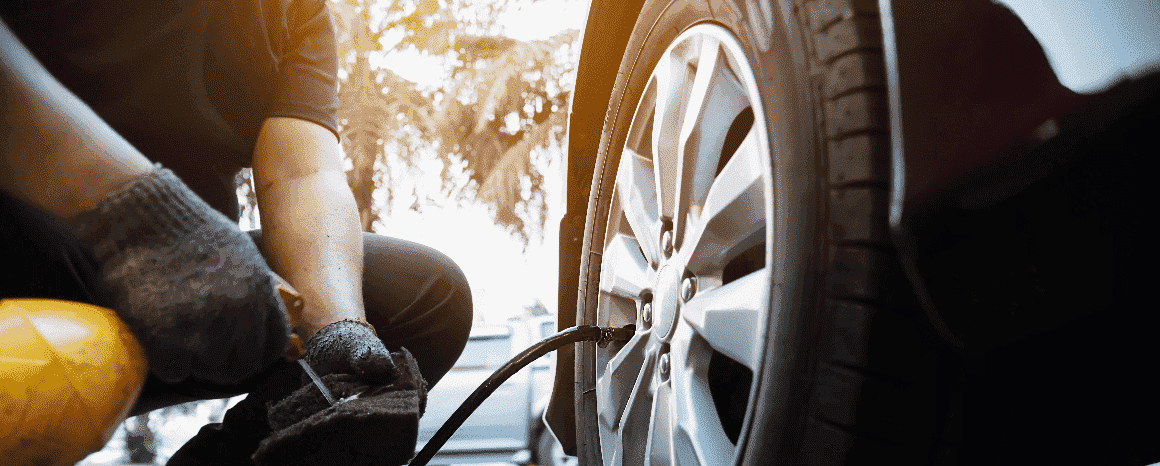
5 Tyre Safety Tips Every Car Owner Should Know
When was the last time you checked your tires for wear? I can't remember. This is something drivers often assume, so we don't blame you. Panic occurs when something goes wrong while driving. We teamed up with TireHub to put together some helpful articles to help you learn about tire safety. With this new knowledge, you will be able to predict tire problems in advance. A car's four tires are what make it work. Unfortunately, proper tire maintenance is an important safety feature that is often overlooked. The importance of properly maintaining your tires cannot be overstated. Proper tire pressure, gait depth, alignment and rotation lead to a safer and more cost-effective ride.
Check tire pressure at least once a month
Tires lose pressure (air) over time. It is important to check it at least once a month. Driving with low tire pressure is dangerous because it affects the functionality of your car, reduces fuel consumption, and can even damage your tires. On the other hand, driving with a flat tire is just as dangerous. Not only does the tire's grip and contact with the road decrease, but it also wears out faster and is more prone to cracking.
To check your tires at home, simply purchase a digital tire gauge. Recommended tire pressures can be found on the sticker on the driver's door frame or in your vehicle's owner's manual. Tire pressure should be checked before a long trip or when carrying additional luggage, as well as once a month when the tires are still 'cold'.
Check your tires regularly, especially before driving long distances.
Perform a physical tire inspection when checking tire pressure or when washing your car. Don't be afraid to get down on all fours and observe. Things to look out for include cracks in the tire, knots, and objects with holes such as nails, screws, glass, and stones. If any of these items puncture the sidewall of your tire, the tire will need to be replaced. If you're going on a long trip, check your tire pressure and inspect your tires before you leave home. It's easier to check your tires when your car is going over 100 miles per hour in your garage or driveway, where it's safer and more comfortable than on the sidewalk.
If you experience a tire failure while driving, consider calling your local tire specialist to replace or replace your tire. If you live in Ahmedabad, our tire service partners are here to help.
Rotate tires to avoid uneven wear
Tire rotation is also necessary to achieve tread wear and maximum driving life. For example, in a front-wheel drive car, most of the braking, steering, and propulsion is provided by the front tires, which inevitably wear them out very quickly.
A "cross-rotation pattern" (such as moving the left front tire to the right rear axle and moving the right front tire to the left rear axle) optimally compensates for walking wear and maximizes tire life. This sequence can be performed on any vehicle equipped with four non-directional tires. Directional tires, indicated by arrows on the sidewall, are only allowed to rotate from the front to the rear of the vehicle and from the rear to the same side so that the direction of rotation does not change. Four-wheel drive and all-wheel drive vehicles are ideal for turning the vehicle from side to left and right to left equally.
Make sure your tires are properly balanced
Tires that are out of balance can lead to uneven tread wear and unpleasant handling, as well as excessive wear on the suspension and other components. An out-of-balance tire can be identified by a strong thud that is noticeable at highway speeds.
If this situation occurs, dynamically adjust the tires as soon as possible. Balancing a tire requires placing weights in the correct location on the bead or inner circumference of the wheel. Tires should always be balanced when first installed and each time they are reinstalled.
Do not overload tires
Overloading tires can lead to punctures and is extremely dangerous. Even if the car's maximum load capacity is not exceeded, uneven load distribution can lead to overloading. To determine your vehicle's maximum passenger and cargo carrying capacity, please refer to your vehicle's owner's manual or check the weight capacity of your tires. Additionally, the weight of the load must be distributed throughout the vehicle interior. It is also best to remove unnecessary weight from the trunk of your car.